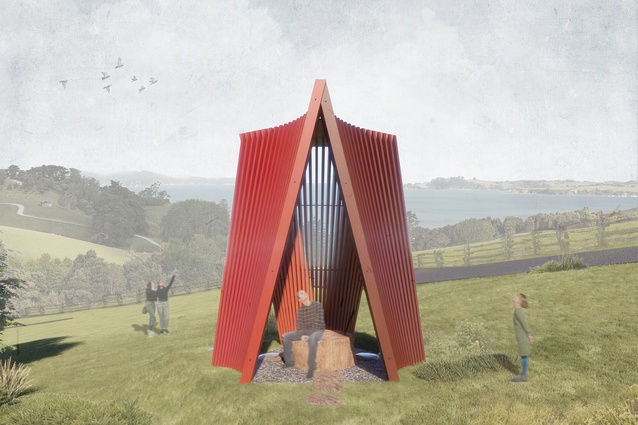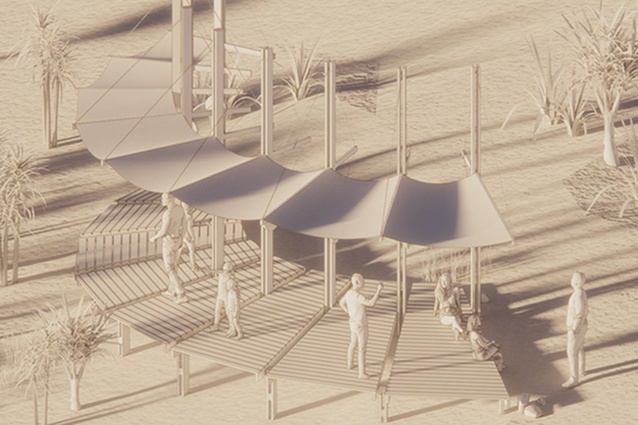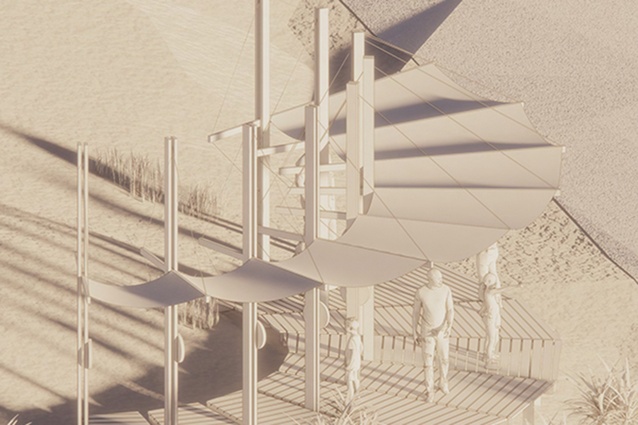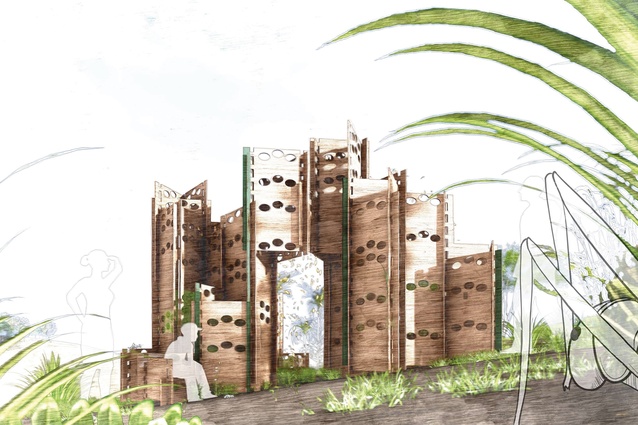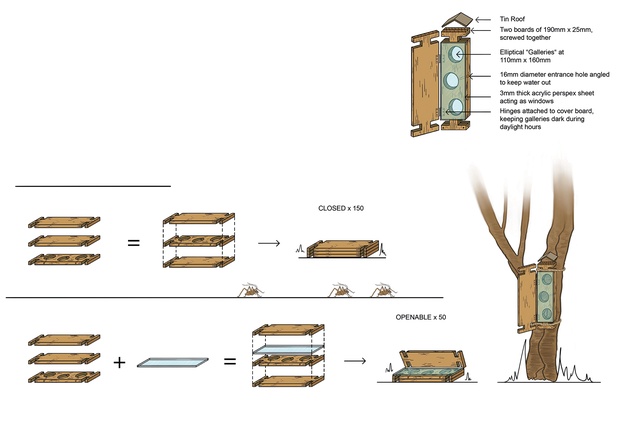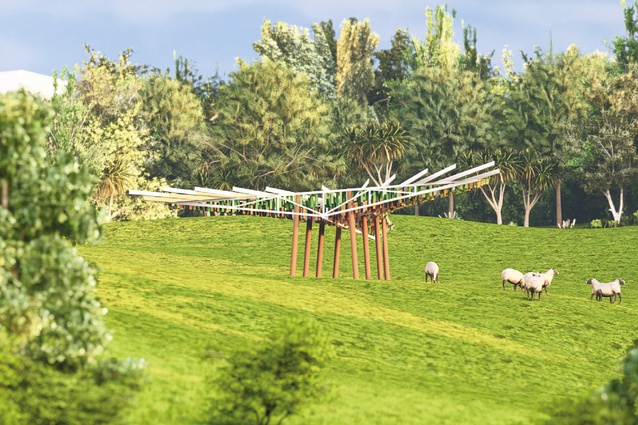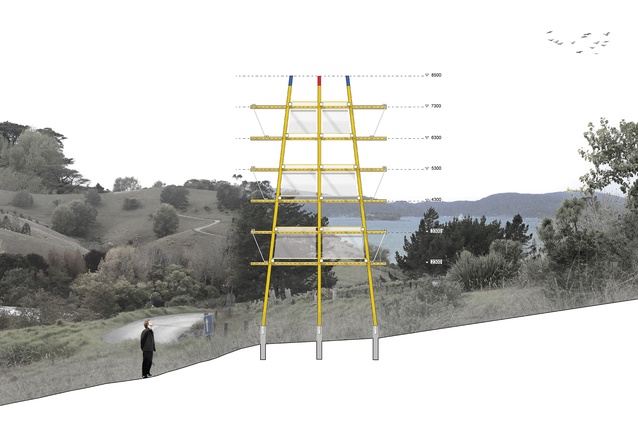Judges select finalists for Brick Bay Folly
This year, five fanciful submissions have been short-listed for the prestigious 2025 Brick Bay Folly. Amanda Harkness takes a closer look at the line-up.
The universal purpose of a folly is simply to ‘inspire and delight’ but the Brick Bay Folly programme has a further motivation — to offer both students and graduates of architecture and design the chance to test their ideas on real-life projects, manage their construction, develop contingencies and participate in the physical builds.
Environmental responsibility also factors into this unique competition, with the re-use of former folly materials, where possible, in an effort to reduce waste, as well as a keen eye on sustainability and recycling in the acquisition of any new materials.
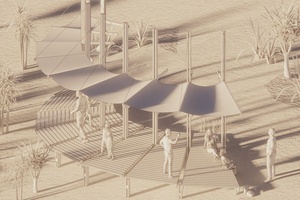
The Vitruvian-inspired circularity of Kōmaru, modelled as if on a mini park, is designed to encourage social interaction, providing a place for visitors to sit and enjoy the surrounding natural landscape. Sail-like canvas awnings overhead present as clouds dancing across the sky, casting ever-changing patterns of sunlight and shadows on the timber seating below. These canopies, or kōmaru, can be raised and lowered with a pulley system, cleverly weighted with boulders sourced from the Brick Bay site. While designed to offer shelter from the elements, these canopies will later be repurposed to provide lasting mementos of the folly in the form of tote bags.

Built from local recycled timber, Putaputawētā is an abstract version of a forest habitat and, essentially, a super-sized wētā motel, made up of more than 200 individual units. After the folly has generated new habitat for the at-risk species, it will eventually decay into the ground, creating compost for trees to regrow or becoming food for another generation of wētā. Putaputawētā’s mix of openable and closed motels is designed to offer a ‘peek’ inside for both education and monitoring purposes while also providing the wētā with privacy and respite from noise and light. On dismantling, it is proposed that some of the motels will be delivered to the Department of Conservation, others to nearby schools and a number will be scattered along the Brick Bay sculpture trail.
Designed both to raise awareness of humans’ impact on our native species — 82 per cent of our indigenous bird species are at risk of extinction — as well as to provide a striking, interactive installation for visitors, Te kākā whakaangi i te tā depicts the kākā soaring in the wind (over page). The folly is oriented towards Kawau Island, a haven for native birds, safe from both predator and urban development. Its siting is also oriented to where the ocean’s breeze rises up from the sea and rolls over the hills. As visitors arrive at Brick Bay, the green feathers of the kākā are visible but little else is revealed. It is not until the visitors are underneath the structure that the brightly coloured feathers of the bird’s underside can be seen… and the swaying shingles can be heard as they gently hit one another, replicating the sound of the treetops rustling in the wind.
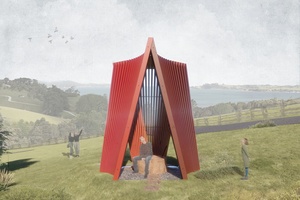
Whakapiri o te tangata combines the symbolism of Aotearoa’s nationally significant pōhutukawa with Matariki, the Māori New Year. The former is symbolic of guardianship, life and togetherness; the latter is marking a time to come together, and to pause, reflect and prepare for the future. The proposal combines the two, to “express a desire for unity within our nation, at a time when we appear socially, politically and culturally divided”. The folly’s orientation aligns its three entrances with three pōhutukawa that inspired the project, with the ley lines weaving connections between Brick Bay and the whakapapa of these significant landmarks. Above, the Matariki stars are rendered in the Corten-steel plate, creating a daylight constellation year-round.
Yellow Post is inspired by the historic hākari structures once built in Kororāreka in Aotearoa’s far north. These enormous scaffold stages served as places of manaakitanga: markers of celebration and congregation in the landscape. Here, hundreds of local iwi would gather for tangi, the resolution of conflict, marriages, the naming of children and reciprocation of hospitality. The hākari, made of kauri and pūriri and bound together by torotoro vines, were temporary in nature, being fully erected for only a number of days before disassembly.
“The design of a folly is a tricky business for those recently educated in reconciling conceptual design and the pragmatics of holding things up while keeping water out,” says Folly judge Pip Cheshire. “One needs a robust idea at the outset as the successful team negotiates time and cost constraints. Any of this year’s finalists is capable of meeting this challenge and creating that elusive target: an object of provocation, interest and, just perhaps, beauty.”
The winning folly will be selected later this year and officially opened at Brick Bay in May 2025.
This year’s judges are Pip Cheshire from Cheshire Architects, Steve Cassidy from Cassidy Construction, Keith Mann from Unitec, Karmen Hoare from Resene, Peter Boardman from Structure Design, Amanda Harkness from Architecture NZ, Richard and Anna Didsbury from Brick Bay, and Jennifer Gao from last year’s winning folly team, who created Femme-ly Velues.
Brick Bay Folly is sponsored by Resene, Cassidy Construction, Cheshire Architects, Structure Design, Unitec, Brick Bay, Sam Hartnett Photography and Architecture NZ/ArchitectureNow.


